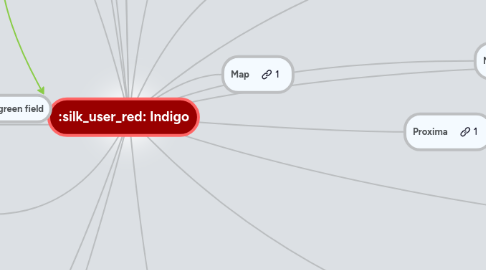
1. Deep Green
1.1. Battlespace Simulations
1.2. Defense and Security
1.3. Bohemia Simulations
2. Sitrep
3. green field
3.1. Alterland
4. blue field
4.1. https://www.eviebot.com/en/
4.2. https://botsify.com/
4.3. https://chatfuel.com/
5. Ogam
6. Most Distant Quasar
7. Andromeda Galaxy
8. Interface
9. Consciousness
10. Artificial Consciousness
10.1. 1 Philosophical views
10.2. 1.1 Plausibility debate
10.3. 1.1.1 Computational Foundation argument
10.4. 1.2 Ethics
10.5. 2 Research and implementation proposals
10.6. 2.1 Aspects of consciousness
10.7. 2.1.1 Awareness
10.7.1. Awareness could be one required aspect, but there are many problems with the exact definition of awareness. The results of the experiments of neuroscanning on monkeys suggest that a process, not only a state or object, activates neurons. Awareness includes creating and testing alternative models of each process based on the information received through the senses or imagined, and is also useful for making predictions. Such modeling needs a lot of flexibility. Creating such a model includes modeling of the physical world, modeling of one's own internal states and processes, and modeling of other conscious entities. There are at least three types of awareness:[9] agency awareness, goal awareness, and sensorimotor awareness, which may also be conscious or not. For example, in agency awareness you may be aware that you performed a certain action yesterday, but are not now conscious of it. In goal awareness you may be aware that you must search for a lost object, but are not now conscious of it. In sensorimotor awareness, you may be aware that your hand is resting on an object, but are not now conscious of it. Because objects of awareness are often conscious, the distinction between awareness and consciousness is frequently blurred or they are used as synonyms.[10]
10.8. 2.1.2 Memory
10.8.1. Conscious events interact with memory systems in learning, rehearsal, and retrieval.[11] The IDA model[12] elucidates the role of consciousness in the updating of perceptual memory,[13] transient episodic memory, and procedural memory. Transient episodic and declarative memories have distributed representations in IDA, there is evidence that this is also the case in the nervous system.[14] In IDA, these two memories are implemented computationally using a modified version of Kanerva’s Sparse distributed memory architecture.[15]
10.9. 2.1.3 Learning
10.9.1. Learning is also considered necessary for AC. By Bernard Baars, conscious experience is needed to represent and adapt to novel and significant events (Baars 1988). By Axel Cleeremans and Luis Jiménez, learning is defined as "a set of philogenetically [sic] advanced adaptation processes that critically depend on an evolved sensitivity to subjective experience so as to enable agents to afford flexible control over their actions in complex, unpredictable environments" (Cleeremans 2001).
10.10. 2.1.4 Anticipation
10.10.1. The ability to predict (or anticipate) foreseeable events is considered important for AC by Igor Aleksander.[16] The emergentist multiple drafts principle proposed by Daniel Dennett in Consciousness Explained may be useful for prediction: it involves the evaluation and selection of the most appropriate "draft" to fit the current environment. Anticipation includes prediction of consequences of one's own proposed actions and prediction of consequences of probable actions by other entities. Relationships between real world states are mirrored in the state structure of a conscious organism enabling the organism to predict events.[16] An artificially conscious machine should be able to anticipate events correctly in order to be ready to respond to them when they occur or to take premptive action to avert anticipated events. The implication here is that the machine needs flexible, real-time components that build spatial, dynamic, statistical, functional, and cause-effect models of the real world and predicted worlds, making it possible to demonstrate that it possesses artificial consciousness in the present and future and not only in the past. In order to do this, a conscious machine should make coherent predictions and contingency plans, not only in worlds with fixed rules like a chess board, but also for novel environments that may change, to be executed only when appropriate to simulate and control the real world.
10.11. 2.1.5 Subjective experience
10.12. 2.2 Role of cognitive architectures
10.13. 2.3 Symbolic or hybrid proposals
10.14. 2.3.1 Franklin's Intelligent Distribution Agent
10.15. 2.3.2 Ron Sun's cognitive architecture CLARION
10.16. 2.3.3 Ben Goertzel's OpenCog
10.17. 2.4 Connectionist proposals
10.18. 2.4.1 Haikonen's cognitive architecture
10.19. 2.4.2 Shanahan's cognitive architecture
10.20. 2.4.3 Takeno's self-awareness research
10.21. 2.4.4 Aleksander's impossible mind
10.22. 2.4.5 Thaler's Creativity Machine Paradigm
10.23. 2.4.6 Michael Graziano's attention schema
10.24. 3 Testing
11. Intelligence
12. Artificial Intelligence
13. Sentience
14. Sapience
15. Super Intelligence
16. Artificial General Intelligence
17. Sociology
18. Philosphy
18.1. Natural philosophy ("physics") was the study of the physical world (physis, lit: nature);
18.2. Moral philosophy ("ethics") was the study of goodness, right and wrong, beauty, justice and virtue (ethos, lit: custom);
18.3. Metaphysical philosophy ("logos") was the study of existence, causation, God, logic, forms and other abstract objects ("meta-physika" lit: "what comes after physics")
19. Ontology
20. Epistemology
21. Etymology
22. Conflict Theories
23. Structural Functionalism
24. Mosul
24.1. Simpath
24.2. Event
24.3. Current 3/12/16
25. Indigo
25.1. History[]
25.2. Battlespace[]
25.2.1. Space
25.2.2. Cyber
25.2.3. Air
25.2.4. Information
25.2.5. Land
25.2.6. Sea
25.3. Weapons[]
25.4. Tactics[]
25.5. Operational[]
25.6. Strategy[]
25.7. Grand strategy[]
25.8. Organization[]
25.9. Logistics[]
25.10. Related[]
25.10.1. Asymmetric warfare
25.10.2. Colonial war
25.10.3. Religious War
25.11. Lists
25.11.1. RedBooks
26. Adversary
26.1. Numbers
26.2. Intel
26.2.1. History[]
26.2.2. Battlespace[]
26.2.3. Weapons[]
26.2.4. Tactics[]
26.2.5. Operational[]
26.2.6. Strategy[]
26.2.7. Grand strategy[]
26.2.8. Organization[]
26.2.9. Logistics[]
26.2.10. Related[]
26.2.10.1. Asymmetric warfare
26.2.10.2. Colonial war
26.2.11. Lists
26.3. Groups
27. Blue Pilot
28. Deeper Blue
29. Sagittarius A*
30. Archive Earthbank
30.1. 2nd
30.2. Facebook
31. Home
32. Map
33. Salt
33.1. AI
33.2. Terrorism
33.3. Task
33.3.1. Sight
33.3.2. distence
33.3.3. Interface
